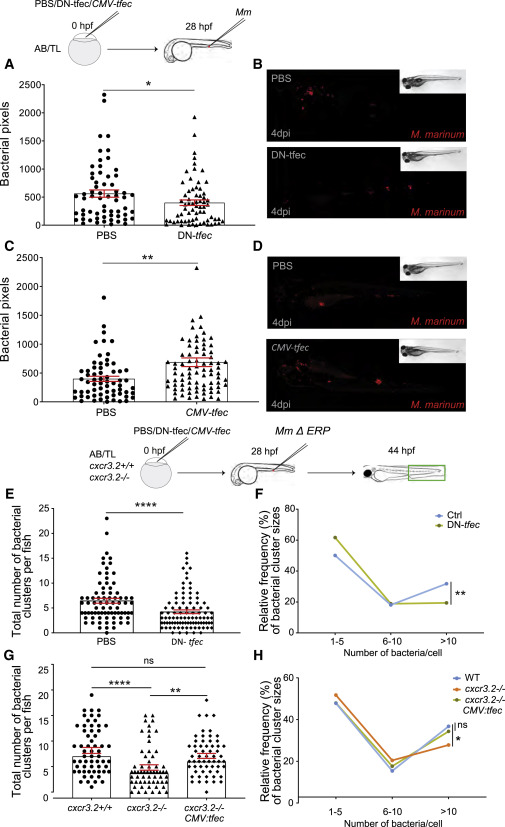Fig. 3 tfec function counteracts enhanced microbicidal capacity of cxcr3.2 mutants (A–D) We inhibited Tfec function with the DN-tfec construct (A and B) or overexpressed the gene with the CMV:tfec construct (C and D) in WT embryos (AB/TL) and subsequently infected them with M. marinum mCherry (representative examples are shown). Larvae injected with DN-tfec had a lower bacterial burden than did PBS injected controls at 4 days post-infection (dpi) (A and B), while CMV:tfec injected larvae had a higher bacterial burden (C and D). (E and F) M. marinum ΔERP-infected WT larvae (AB/TL) previously injected with DN-tfec developed fewer (E) and smaller (F) bacterial clusters than did PBS controls and phenocopied cxcr3.2 mutants in their capacity to clear bacteria. (G and H) CMV:tfec-injected cxcr3.2 mutants (cxcr3.2−/−) infected with M. marinum ΔERP lost their enhanced microbicidal capacity and had more (G) and larger (H) bacterial clusters than did WT controls (cxcr3.2+/+). Overall bacterial burden data were analyzed using a two-tailed t test (A–D). Total bacterial clusters per fish were analyzed using a Mann-Whitney test and combined data of three independent replicates of 20–30 larvae (E and G). A Kolmogorov-Smirnov test was used to analyze the distribution of bacterial cluster sizes (F and H). All data are shown as mean ± SEM (∗p ≤ 0.05, ∗∗p ≤ 0.01, ∗∗∗p ≤ 0.001 ∗∗∗∗p ≤ 0.0001; ns, not significant [p > 0.05]).
Image
Figure Caption
Acknowledgments
This image is the copyrighted work of the attributed author or publisher, and
ZFIN has permission only to display this image to its users.
Additional permissions should be obtained from the applicable author or publisher of the image.
Full text @ Cell Rep.

